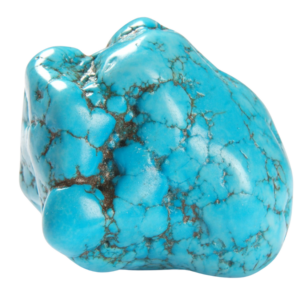Turquoise:
December birthstone

Physical properties
Turquoise is a hydrous phosphate mineral known for its vibrant blue-to-green color, often with matrix patterns of brown or black. It has a waxy to dull luster and is typically opaque. Turquoise has a hardness of 5-6 on the Mohs scale, making it relatively soft and requiring care to avoid damage. Its unique color and cultural significance have made it a cherished gemstone for centuries.
history
Turquoise has been prized for over 5,000 years, with ancient Egyptians, Persians, and Native Americans using it in jewelry, amulets, and ceremonial objects. It was believed to bring protection and good fortune. In Native American cultures, turquoise is considered a sacred stone, often used in rituals and as a symbol of the sky and water. Today, it remains a popular gemstone for its beauty and spiritual significance.

Symbolism & Beliefs
Turquoise symbolizes wisdom, protection, and healing. It is often associated with communication, emotional balance, and spiritual grounding. Many believe turquoise helps to enhance intuition, promote peace, and protect against negative energy. It is also seen as a stone of friendship and positivity, fostering connection and harmony.

